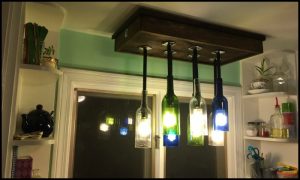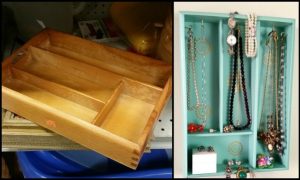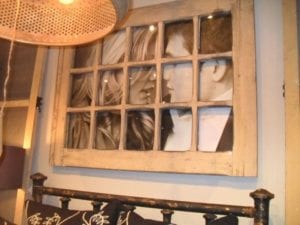Last Updated on March 9, 2017 by teamobn

We live on 100 acres, so technically, we could have located our swimming pond in a thousand different locations. The reality however was that we needed the pond close to the house. Not all of our children are water safe, so we either swim with them, or stay at the waters edge.
My husband and I wanted a location that would allow us (in future years hopefully) to be able to monitor the kids from the kitchen and lounge room. This is our personal preference, not a recommendation on water safety and children, and the reality with our special needs kids, is that we may never be able to let them swim without us being with them.
If you live on a small suburban block, there may only be one location that you can put your swimming pond. Similarly, if you are retrofitting a conventional pool (yes, you can do that), then the location has already been pre-determined.
Below is a list of things to consider when looking at where you would like to put your swimming pond. Not all points will be relevant to everyone, and my apologies if I have missed any that we didn’t have to take into consideration.
The size of the “swimming” area you want
Obvious right? Well, maybe, but what may not be so obvious is the fact that you need to allow a surface area 50% of the size of your swimming area for your reed bed filtration system.
For example, if you have a swimming area 8 x 4 (32m2), then your reed bed area will need to be 16m2. This requires a total area of 48m2 before landscaping.
Note that the depth of your swimming area has no bearing on the size of your filtration system and that the depth of your filtration system will be between about 40cm and 100cm, irrespective of the size of your pond.
Don’t panic, this is about as mathematical as it gets. 🙂
Landscaping
Do you intend to have paving around your pond? A seating/entertaining area? Shade sails? Water features? Water slide?
Yes, some of these can be added further down the line (when finances allow), but only if you have allowed the space.
Fencing
Again, this is going to be a very individual issue.
Check with your local government authority. Fencing laws vary greatly between areas, let alone countries.
Even if you don’t legally require a fence, they still need to be considered. Your house may only have competent swimmers, but consider visitors who have children, future grandchildren, neighbourhood children etc.
Our swimming pond required a very large amount of fencing as the area we fenced included both the swimming pond and the reed bed and landscaping.
If you live on a suburban block, you may be able to use some of your boundary fences as pool fencing if you situate the pond in the corner of your yard.
Power lines, water pipes, gas lines, sewer lines etc
Where are they? If you don’t know, find out.
We had to locate our pond around underground power, the kitchen grease trap (we are on septic) and the water pipes (we are on tank water, so we catch all our water off our roof and send it underground to the water tank).
Soil Type
If you don’t know your soil type, organise a local agency to test it for you.
Why? Because it will help determine the best way to create your pond. Clay holds water, sand doesn’t. If you are on rock, your excavation costs are going to increase dramatically.
Trees
Are you going to have to remove trees to put your pond in the location you want? This is an additional cost that will need to be allowed for in your budget.
Large trees near your pond may end up sending their roots into your pond as a handy water source.
Similarly, if you have deciduous trees, expect to spend part of your year scooping leaves out of the pond. Natural swimming ponds are low maintenance, not no maintenance.
Access to site (e.g. diggers, trucks, cranes etc)
There is no point deciding on a location for your pond if it is going to be impossible to get the machinery in to dig the hole (unless of course you are planning on digging the hole by hand).
Access to water
We top our pond up on a fairly regular basis.
Also, check with your local government authority as to whether they require you to find an alternate source of water (i.e. not the garden hose) when you are filling your pond for the first time. Many do!
Access to power
Your swimming pond will need a small low voltage pump to circulate the water through the filtration system. It will need to run 24/7 at about 3 – 4 litres per minute. Solar is a possibility, but after much investigation, we bought an electric pump for about $80 which hasn’t missed a beat.
If you live in an area that gets snow, or freezing conditions, you may need to heat your pond to stop it from freezing.
Location in Relation to the Sun
If you live in a very hot part of the world, you may want to locate your pond in a shady position. This will help reduce evaporation and keep your swimming pond at a refreshing temperature rather than like bath water.
For colder parts of the world, try and locate your pond where you will get year round sun. It will help keep the water warm and increase the amount of time you can swim each year.
Our pool gets sun all day. We ended up putting a large shade sail up to not only give some sun protection, but to also keep the pool at a refreshing temperature in summer, as it was starting to feel more like a bath.
Remember that your swimming pond will be warmer than a traditional pool, because of the filtration system. The water on top of our reed bed heats to quite a warm temperature as it filters through, as only 10cm or so of water sits above the gravel line. Shallow = warm.
Other backyard activities
This added to the issues of where to place the pool. Our kids are at the age where we have a trampoline, swing set, monkey bars etc. They also needed a flattish area to play soccer and back yard cricket in.
If you have an active family, try and locate the pond in such a way that it doesn’t take over the whole yard.
Finally, be flexible. We ended up with our pond running perpendicular to the way we had planned to get around some of our own site issues.
Next blog, I’ll be talking about lining options for your pond. In the mean time, feel free to comment or ask questions.
Part 3: Snakes and Ladders…








